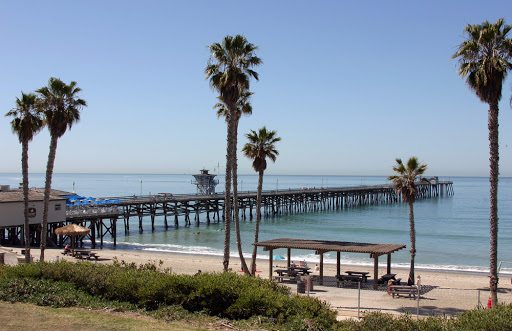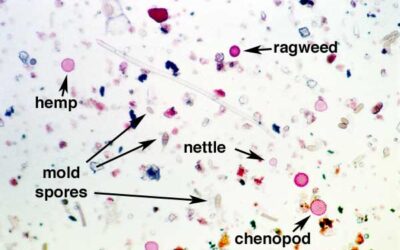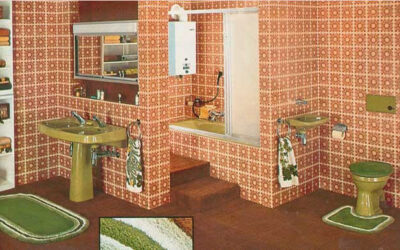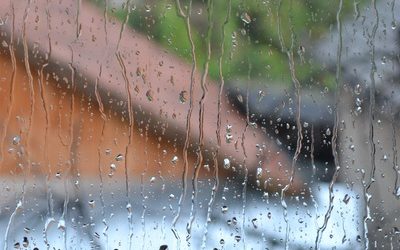Efflorescence for Inspectors
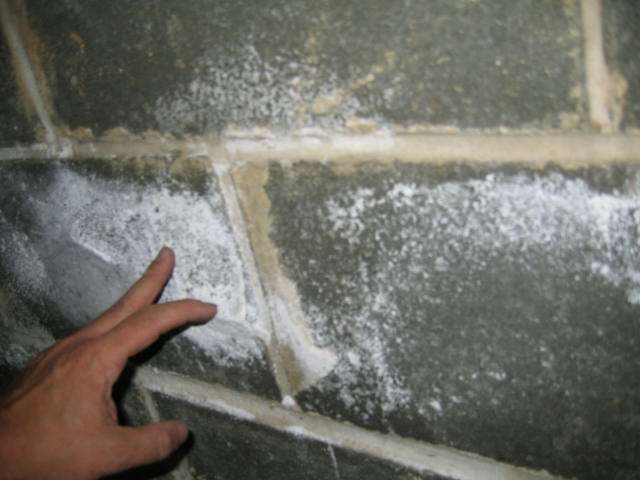
Efflorescence on a CMU wall
Efflorescence is the white chalky powder that you might find on the surface of a concrete or brick wall. It can be a cosmetic issue, or it can be an indication of moisture intrusion that could lead to major structural and indoor air quality issues. A home inspector should understand what efflorescence is in order to recognize potential moisture problems.
Efflorescence (which means “to flower out” in French) is the dissolved salts deposited on the surface of a porous material (such as concrete or brick) that are visible after the evaporation of the water in which it was transported. The moisture that creates efflorescence often comes from groundwater, but rainwater can also be the source. Efflorescence alone does not pose a major problem, but it can be an indication of moisture intrusion, which may compromise the structural material.
Porous Building Materials
Concrete, wood, brick, stone and mortar are porous materials that contain salts. The ground in which these materials can come into contact also contain salts. Capillary action can literally suck water and transport it through porous building materials.
Capillary Action
Salts dissolved by groundwater can be transported by capillary action through porous soil. Building materials in contact with soil will naturally wick the water inward and upward. Take concrete footings — they are typically poured directly onto soil without any capillary break. Sometimes this is called rising damp. This is the beginning of how water can wick upward into a structure.
Destructive Pressures

When the capillary flow of water reaches the surface of a building material, evaporation occurs. As the water evaporates, salt is left behind. As this evaporation of capillary flow continues, the salt concentration increases, which creates an imbalance, and nature abhors imbalance and always wants to put things back into equilibrium. This is process is called osmosis. To re-establish equilibrium through osmosis, water rushes toward the salt deposit to dilute the concentration. This rush of water creates massive hydrostatic pressures within the porous material, and these pressures are destructive.
The pressure from osmosis can create incredibly strong hydrostatic pressure that can exceed the strength of building materials, including concrete.
Here are some examples of how that pressure translates:
- diffusion vapor pressure: 0.3 to 0.5 psi
- capillary pressure: 300 to 500 psi
- osmotic pressure: 3,000 to 5,000 psi
As you can see from the list above, osmosis can create pressure that is greater than the structural strength of concrete, which can be from 2,000 psi to 3,000 psi. The action of water rushing to the surface due to capillary action creates incredible forces that can cause materials to crack, flake and break apart.
Spalling
When efflorescence leads to strong osmotic pressures—greater than the strength of the building material—and the material literally breaks apart, the resulting damage is called spalling. Hydrostatic pressure can cause spalling, but spalling can also be caused by freeze-thaw cycles in building materials that have a high moisture content.
Both efflorescence and spalling can be prevented with capillary breaks, such as by installing a polyethylene sheeting under a concrete slab.
Identifying Efflorescence
- Pinched between the fingers, efflorescence will turn into a powder, while mold will not.
- Efflorescence forms on inorganic building materials, while mold forms on organic substances. However, it is possible for mold to consume dirt on brick or cement.
- Efflorescence will dissolve in water, while mold will not.
- Efflorescence is almost always white, yellow or brown, while mold can be any color imaginable. If the substance in question is purple, pink or black, it is not efflorescence.
- If you dab a bit of the white chalk on your tongue and it’s salty, it’s probably efflorescence.
- fungi that rot wood;
- water damage to sheetrock; and
- reduced effectiveness of insulation.

Prevention
- An impregnating hydrophobic sealant can be applied to a surface to prevent the intrusion of water. It will also prevent water from traveling to the surface from within. In cold climates, this sealant can cause material to break during freeze/thaw cycles.
- During home construction, bricks left out overnight should be kept on pallets and be covered. Moisture from damp soil and rain can be absorbed into the brick.
- Install capillary breaks, including polyethelene sheeting between the soil and the building material, such as concrete.
Removal
- Pressurized water can sometimes be used to remove or dissolve efflorescence.
- An acid, such as diluted muriatic acid, can be used to dissolve efflorescence. Water should be applied first so that the acid does not discolor the brick. Following application, baking soda can be used to neutralize the acid and prevent any additional damage to the masonry. Muriatic acid is toxic, and contact with skin or eyes should be avoided.
- A strong brush can be used to simply scrub the efflorescence off.

